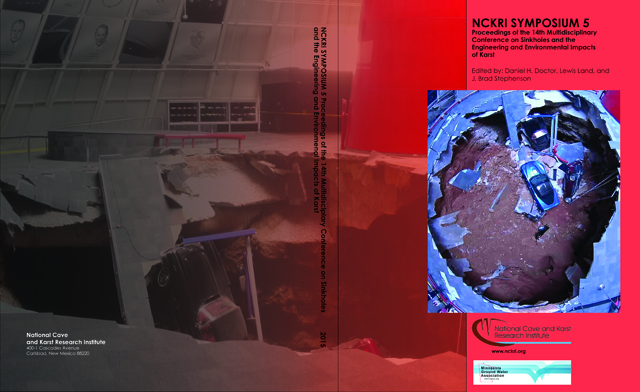Abstract
From 1942 through 1968 there was an active iron ore mining industry in western Fillmore, eastern Mower and southern Olmsted Counties of Minnesota. This iron mining district was 250 miles south of, and the ores were a billion years younger than, the ores of the classic iron mining districts in northern Minnesota. The high grade iron ore was mostly goethite and hematite and occurred as near-surface relatively small pods which unconformably filled paleokarst depressions in the Devonian Spillville Formation and the Ordovician Stewartville Formation. The source of the iron has long been cryptic. The available field and textural evidence is consistent with a hypogenic origin of these iron deposits. Before the current Mississippi River drainage system was incised, regional ground water flow systems could have emerged through the karst conduits in the Paleozoic carbonates. The waters in the deeply buried aquifers underlying this area currently are anoxic and enriched in dissolved ferrous iron and would have been more so before the entrenchment of the Mississippi River reorganized the regional ground water flow system. When that water emerged into the atmosphere the ferrous iron would have quickly been oxidized by a combination of biotic and abiotic processes producing the ferric oxide ore at the spring orifices. Numerous springs and seeps in Minnesota are currently building iron oxide deposits at their orifices.
Rights Information
DOI
http://dx.doi.org/10.5038/9780991000951.1019
A Proposed Hypogenic Origin of Iron Ore Deposits in Southeast Minnesota Karst
From 1942 through 1968 there was an active iron ore mining industry in western Fillmore, eastern Mower and southern Olmsted Counties of Minnesota. This iron mining district was 250 miles south of, and the ores were a billion years younger than, the ores of the classic iron mining districts in northern Minnesota. The high grade iron ore was mostly goethite and hematite and occurred as near-surface relatively small pods which unconformably filled paleokarst depressions in the Devonian Spillville Formation and the Ordovician Stewartville Formation. The source of the iron has long been cryptic. The available field and textural evidence is consistent with a hypogenic origin of these iron deposits. Before the current Mississippi River drainage system was incised, regional ground water flow systems could have emerged through the karst conduits in the Paleozoic carbonates. The waters in the deeply buried aquifers underlying this area currently are anoxic and enriched in dissolved ferrous iron and would have been more so before the entrenchment of the Mississippi River reorganized the regional ground water flow system. When that water emerged into the atmosphere the ferrous iron would have quickly been oxidized by a combination of biotic and abiotic processes producing the ferric oxide ore at the spring orifices. Numerous springs and seeps in Minnesota are currently building iron oxide deposits at their orifices.

